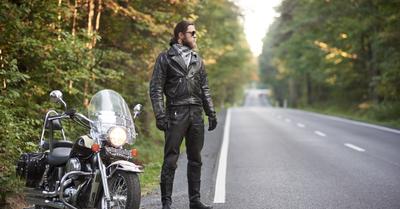What Harley Has A Boom! Box Audio System?
The following touring bikes from Harley-Davidson are equipped with the high-end sound system of The Boom!™ Audio: CVO Street Glide, CVO Road Glide, CVO Limited, Street Glide Special, Ultra Limited Low, Ultra Limited, Road Glide Special, and Road Glide Ultra. This sound system is also an option (factory-installed) for the Street Glide, Electra Glide Ultra Classic, and Road Glide Harley models.
The Boom! Box GT audio system comes with either two or four speakers with 25 watts per channel depending on the model. Apple CarPlay is integrated into the system and the user can access the controls with a microphone for a hands-free experience. This allows information like weather, traffic, and various ride routes (like fastest, scenic, twistiest, shortest, etc.) to be rider controlled much like a smartphone.
Upgrades are available and recommended for powering up the speakers for better listening while riding at high speeds. The Boom! Box GTS Stage II speakers have 1,200 watts of power and include FM, AM, XM, Bluetooth, and good memory for storing digital media. The system supports wireless headsets which support hands-free control of the entire infotainment programming.
The actual interface of the Boom! Stage II is highly advanced including scratch-resistant Corning® Gorilla® Glass manufactured to display well and minimize reflection in bright sunshine. The display is a higher contrast ratio by four times the original Boom! Box GTS, and has more memory and faster processing speeds making the start-up time 21 seconds faster. Other apps are available and compatible with the upgrade including the Harley-Davison App which helps plan routes, record routes, recommend routes, and has riding challenges included. It can show where H-D dealerships are located as well as gas stations, restaurants, hotels, and attractions like motorcycle rallies and events.
The Advantages Of A Stock System
The original Harley stock radio was created with Speed Dependent Volume Control (SDVC) which aftermarket radios usually don’t have. This increases your volume automatically as you accelerate and precisely balances sound. This is a great advantage for the stock system which knows the Db levels of the bike.
The weakness of the Boom! Box audio was the limited amps and sound it produced. However, once you upgrade to Stage II, it competes as well as most aftermarket products for power and sound amplification.
The native audio adjustments that are built into the original factory radio are difficult to duplicate with an aftermarket radio that has to be flashed and tuned independently. The only real advantage aftermarket systems would have is a simper plug-and-play RCA output system.
Aftermarket Sound Products
If you do decide to go with an outside sound system, do your research and keep it American-made. It’s advisable to work with someone local that warranties their work and can finely tune your new system days after installation. It takes a while to know what works for your bike, and you’ll need someone who stands by their work.
It’s also advisable not to get your bike flashed with the factory flash tool at a dealership, but instead with a TecnoResearch Flash Tool. The Rockford Fosgate flash profile is the best option with the best frequency response and will enable your rear speakers if you have a dual-channel system. This flash will also enable analog tone and fader control because stock Harley systems control the tone and fader options inside the amp instead of the radio. Removing the radio removes your tone and fade controllability.
Final Considerations
The older modern radio systems (2006 – 2013) were known for failing after short mileage. These versions were simply not durable enough for the Harley engines known for their strong vibrations. After enough shaking, any electronic system that is not made for durability will lose connections in the wiring. They also were known for cracks in the circuit board because of two riser bolts that extended too far in the fairing.
So anyone with these older radios will eventually need to upgrade after so much shaking and rattling.
Also, while this shouldn’t need to be said because of common courtesy, this author has found that courtesy is becoming more and more uncommon. When upgrading your system for better sound quality and volume, it may be tempting to test the power of your new amplifiers for volume at every opportunity. We come from a land of bigger is better and louder makes you prouder. So it’s not uncommon to hear a Harley from a mile away, not because of his Milwaukee 8 engine, but because they have their system turned all the way up. When riding in the country: go for it. But remember that the Harley name also comes with a reputation of a classic motorcyclist that is loyal to a mystic of a machine that needs no accouterments. Being rude on the road is not a part of that mystic. So turn it down in traffic and in your neighborhood. Sad that has to be said, but we are compelled to educate the next generation of Harley owners as necessary.














